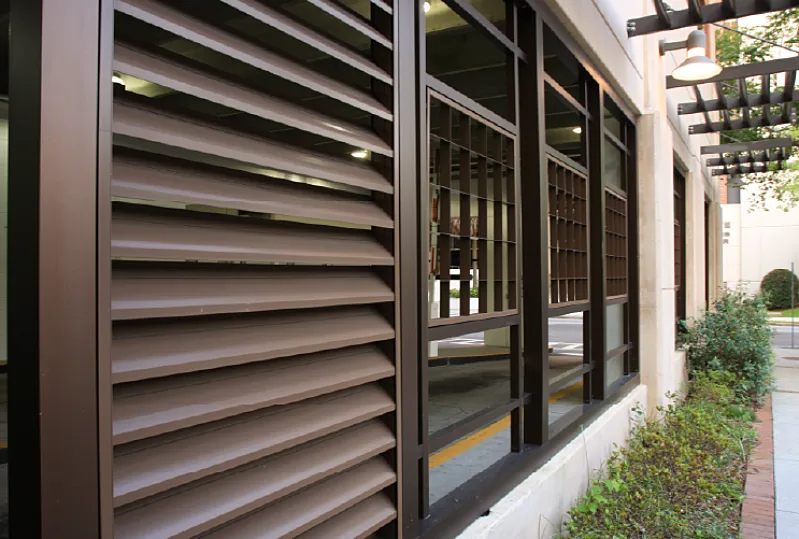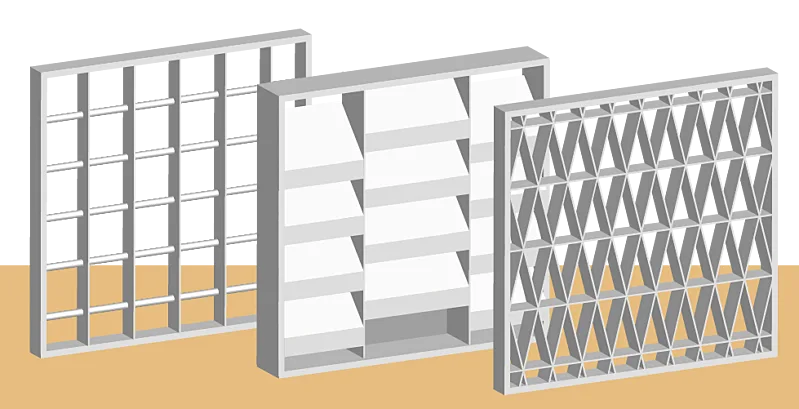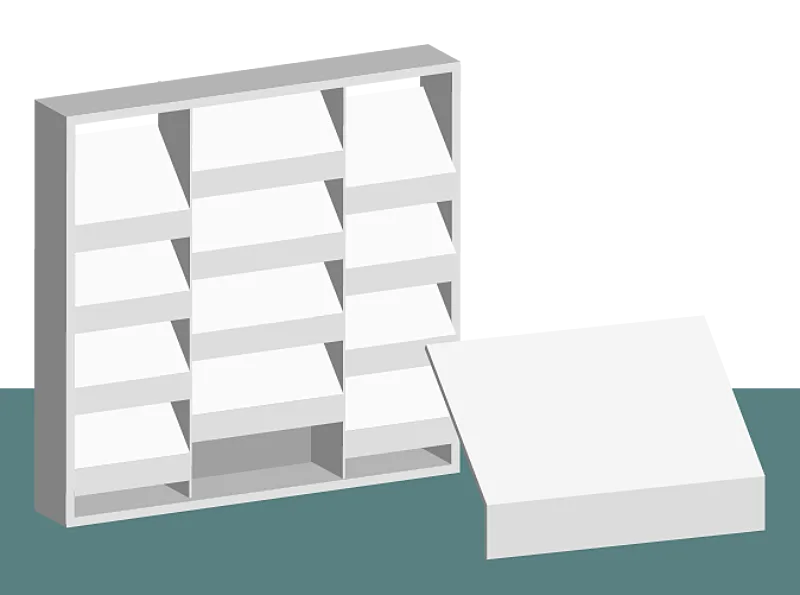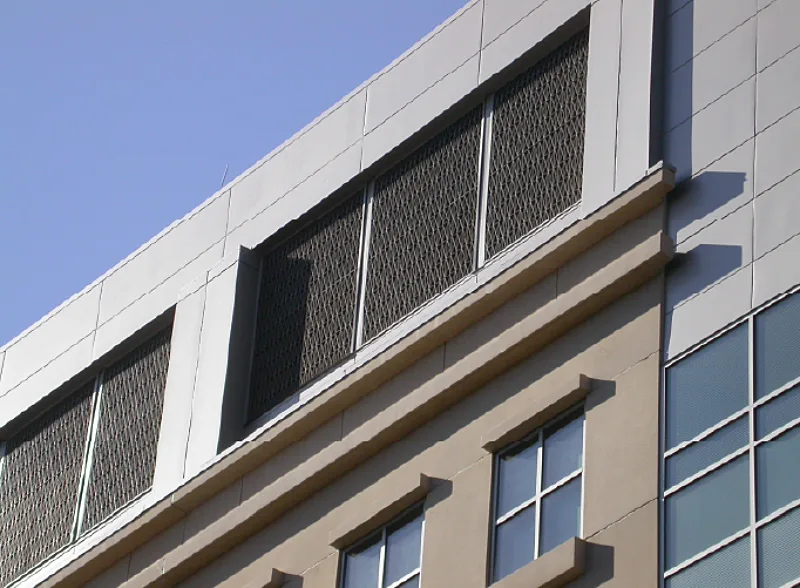Louvers and grilles. These two words are often used to mean the same thing, several angled blades in a frame. They do have a similar design, and some louver types can fulfill the same role as a grille. When should you use a grille over a louver?
First, we need to explain the difference between louvers and grilles. Louvers are designed to protect ventilation points from water infiltration.
There are several types of louvers that fulfill specific requirements, like wind driven rain, but they are all designed with protection in mind.
Most louvers are large assemblies, typically four to six inches deep. They will often have features along their blades that capture and direct water out of the louver. Louvers can still deflect incoming rain without these features thanks to their angled blades.

Grilles can also have angled blades and can provide a small amount of protection. However, grilles are lightweight assemblies. They typically have a depth of two inches, though certain models can be even thinner than that. Grilles share a lot in common with architectural louvers. Both designs prioritize versatility.
You can install grilles anywhere with the right support. Architectural louvers will always have straight blades that run horizontally or vertically across the face of the louver. All the blades will be in the same direction.
These versatile assemblies can have additional designs that aren’t available to architectural louvers. They can have blades that intersect along the profile. For example, AWV offers Marquis grilles with a diamond-shaped profile.
This design can block sightlines through the grille while maintaining an open feel. With the right finish, a Marquis grille can add an eye-catching feature to a wall or opening.
They don't prevent rain from getting through, but grilles can serve other roles in your designs.

Openings in walls can create natural ventilation points. This allows you to bring fresh air into an interior space with no need for ducts and fans. However, you can run into privacy issues if the opening leads outdoors.
The opening will allow passersby to see easily into the interior space. A grille can help maintain privacy by blocking sightlines through the interior without compromising the natural airflow.
The level of privacy will depend on the grille’s designs. The eggshell design will have plenty of free area for airflow but will also be easier to see through. Consider using grilles with complex patterns for privacy. These can draw the eye towards the opening, while also obscuring vision into the interior space.
Grills have a lightweight design and a modular construction. Like louvers, you can create larger grille assemblies by connecting multiple grille panels together. This can be helpful when designing projects with large openings, like parking garages.
These openings provide an excellent, natural source of ventilation, providing fresh air to the rest of the structure.
A parking garage is technically an interior, but many consider it an outdoor space because of its open design. Water infiltration is a lesser concern in these spaces since the garage will shelter vehicles.

Grille assemblies can provide a basic layer of protection without compromising the airflow. A lightweight grille system can cover a large opening and block light rainfall. You can keep the interior dry while maintaining the open-air feel and the natural ventilation.
Grilles won’t block heavy rain or rain carried by straight line winds. If protection is a greater concern, then you may need to consider a louver assembly instead. This will require additional support and will affect airflow through the openings.
Grilles work best as a design tool. They are best at enhancing architectural aesthetics. Their lightweight design gives them versatility. You can install grilles at practically any point on a building and use them to draw attention to the building’s features. You can even mount them on a wall, like a painting, with the right support.
Various grille designs and finish options give you many more choices. Apply a long-lasting finish to help your grilles stand out on the wall or blend in with the rest of the building’s façade.
Add lines and patterns to any surface or opening. Grilles provide hundreds of design options.

Looking to enhance your designs? Have an opening that needs a vision blocker? Consider adding grilles from AWV. Our Marquis pattern is just one of several grille designs we offer. Browse our full line of grille and vision screen products online. We offer free color-matching services with our finishes, too.
Ready to start? Contact AWV today.







